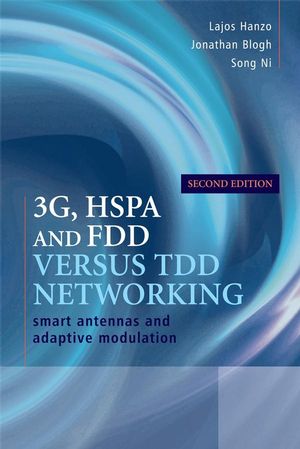3G, HSPA and FDD versus TDD Networking: Smart Antennas and Adaptive Modulation, 2nd EditionISBN: 978-0-470-75420-7
Hardcover
600 pages
March 2008, Wiley-IEEE Press
 |
||||||
3G, HSPA and FDD versus TDD Networking, Second Edition is
the only book that contrasts the network capacity gains that may be
achieved with the advent of adaptive antenna arrays and HSDPA-style
adaptive modulation techniques in the context of FDD and TDD CDMA
cellular networks. In the five years since the first edition
of this book was published the wireless landscape has evolved
further. The new book addresses the recent developments in the
field of HSDPA-style wireless networking, focusing particularly on
the issues and challenges of FDD versus TDD networking. These
solutions are particularly powerful in shadow-faded scenarios, when
the antenna array elements experience correlated, rather than
independent fading. Furthermore, the flexible up-link/down-link
time-slot allocation of TDD is beneficial for supporting the
Wireless Internet, but results in erratic interference
fluctuations, which is efficiently combated by the antenna arrays
and adaptive modulation. Additionally, whilst the adaptive
modulation aided system simply drops the instantaneous transmission
rate during instances of high interference, conventional networks
would drop the call.
- Builds on successful previous edition to include recent developments in the field of HSDPA-style wireless networking
- Provides an all-encompassing self-contained overview of the subject for a wide range of readers of all levels.
- Treats the topics of both physical-layer and network-layer aspects of wireless systems using a cross-layer optimization approach.
- One of the first books to contrast in detail both FDD and TDD networking.
The material is presented clearly and logically allowing the uninitiated reader to commence reading it at fundamental non-mathematical conceptual level at the beginning of the book, while advanced readers can turn directly to the required chapter describing solutions to a number of wireless FDD or TDD networking problems. This book will inspire researchers, practicing engineers, operators, marketing engineers and advanced postgraduates.



